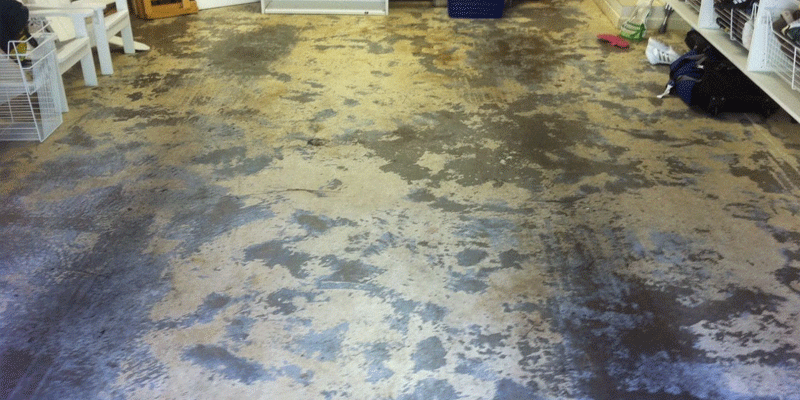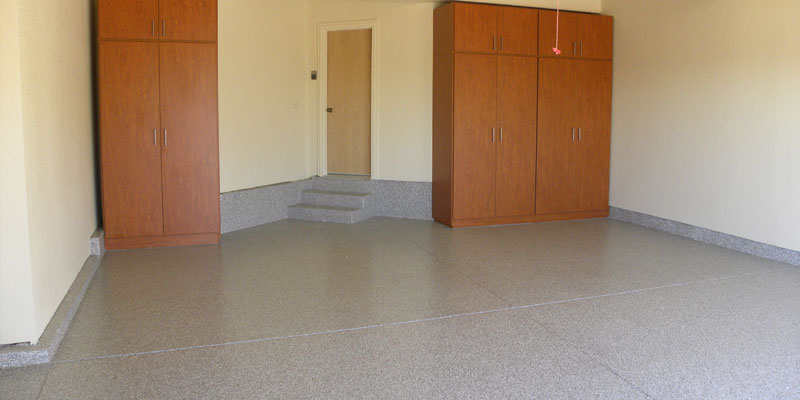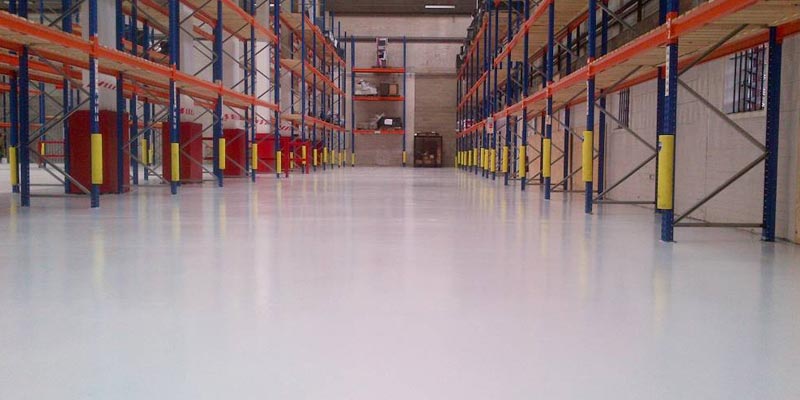My Epoxy Floor Is Peeling. How Can I Fix It?

If your epoxy floor is peeling, you’re probably wondering, “What’s going on?” Here are some of the possible causes: dry concrete, acid etching, water underneath peeled epoxy, and improper application of the coating. If none of these causes explain your peeling epoxy, you’re not alone! In fact, many people have encountered the same problem! Read on to discover how to prevent this problem from happening to you.
Acid Etching
The first step is neutralizing any acid etching solution spilled on your floor. Several concrete etching solutions contain a neutralizer, a mixture of baking soda, and water. Apply this solution with a watering can and allow it to remain for about 10 minutes before rinsing it off. Apply more neutralizer if necessary. You can also use a pressure washer to rinse your floor thoroughly.
Another cause of peeling epoxy floors is improper surface preparation. A poorly prepared concrete floor is not the best candidate for epoxy application. It will not adhere well to it and will leave fisheyes and round holes. If your concrete has not been properly prepared before epoxy application, you will have to go through the process of acid etching. This process is necessary if you want a smooth, even surface for your epoxy.
Whether your floor has been sealed or not will depend on how thoroughly you prepare the surface. Unlike epoxy, sealed concrete will not work on unsealed concrete. To determine if your concrete is sealed, try to spill water on it. The water will absorb into the concrete, which indicates it has been sealed. If water sits on top of the concrete, the floor is likely sealed with an epoxy coating. If you can find the sealant layer, you can apply the epoxy coating.
What causes acid etching to occur? In most cases, it is a buildup of weak concrete particles. This is due to the excessive amount of water in the mix. During the curing process, water will rise to the surface and bring fine particles of concrete with it. These particles will then dry onto the surface. Acid etching can remove these thin layers of laitance. Otherwise, the paint will not adhere to the floor, which will eventually cause it to peel.
If the surface is not scratchable, you should check whether it’s already etched. You can use test kits to determine the hardness of the surface. Using a ping test can tell whether the surface paste has delaminated. Also, avoid applying epoxy over acid-etched surfaces. This process is harmful to epoxy and may result in a floor that begins peeling. It also adds moisture to the slab, which can cause the surface to crack.
Dry Concrete
The cause of a peeling epoxy floor can be a combination of different things, including moisture. This moisture can be in the concrete itself or underneath the slab. If the floor is not thoroughly dry, the epoxy may separate and rip pieces of concrete from the concrete beneath. There are some ways to remedy this problem. To start with, dry up the area that has been damaged. It will require a few days of dry concrete before another coat can be applied.
If the surface is too soft to apply the epoxy, it is necessary to grind it back to remove excess laitance. The problem can also be caused by poor concrete preparation or poor finishing. You can spot these signs by looking at easily scarred or crumbling areas. If you’ve already attempted this method and found that it didn’t help, you’ll need to remove any sealants or oil stains from the surface. A professional can do this task for you, but it’s not worth the money.
Epoxy may also peel because of silicones, oil, or a polymer tire residue. Oil stains can prevent the epoxy from bonding properly to the concrete. These types of stains are usually darker than the rest of the concrete. If you notice this, you should remove them with an acid-based cleaner, but be careful to follow instructions closely. This method can cause bubbles and gasses that need grinding out. You may want to try acid etching as well, but this method is only good for stubborn stains.
Water Under Peeled Epoxy
If you notice that your epoxy floor is peeling or discoloring, it is likely caused by improper preparation or improper application of the resin. If the concrete is too wet, the epoxy cannot properly set, and you could end up with a round or fisheye hole in the finish. Additionally, if the surface is too clean or rough, the epoxy will not adhere properly to the surface and will start to peel over time.
If you find that your epoxy coating has peeled, it’s time to reapply it. The best way to remedy this is by properly preparing your concrete floor. A waterborne coating can be applied over most old coatings. However, it’s important to test if it lifts or peels. If the paint is peeling off the floor, it’s probably due to improper prep. If it’s not peeling, then you should wait for the surface to dry fully before reapplying the coating.
In order to prevent peeling, you need to clean the surface regularly with a soft brush or a dust mop. If the surface is rough, it’s recommended that you scrub the surface with a bristle brush. Rinse it with a hose afterward. Apply a general-purpose cleaner once a month to clean the surface. Alternatively, you can use a hose to clean the floor.
Preparing your floor properly for epoxy installation is essential for a long-lasting, flawless finish. Be sure to read our Epoxy Facts & Fiction page for more information about this important subject. If the floor has problems, the epoxy may not be suitable for it. It might even cause peeling. In this case, you’ll need to hire a professional to assess the floor for proper application.
Before you install an epoxy floor, make sure to remove any existing coatings or sealants. These coatings may contain solvents that cause the epoxy to flake or bubble. When the concrete dries, liquids will be absorbed into the surface and will not bond properly. So, if you notice a peeling floor, take action immediately. Do not wait until it’s too late!
Poorly Applied Epoxy
The most common sign of a poorly applied epoxy coating is the appearance of pinhead-sized bubbles. These bubbles may appear randomly or in honeycomb clusters. The air is trapped during the mixing process. When mixing Part A and Part B with mechanical means, aggressive mixing results in the formation of small entrapped bubbles. In the case of a peeling epoxy floor, air entrapment will occur.
Excessive moisture and heat can cause an epoxy floor to peel or pucker over time. Choosing the right primer and coating is essential to prevent peeling. Poorly applied epoxy will also lead to an uneven surface, leading to cracks and peeling around the seams. Proper preparation can ensure that the floor looks great for years to come. And as long as you pay attention to proper maintenance, your floor will last for decades.
A poorly prepared concrete surface is another potential cause for a garage floor epoxy to peel. Poor concrete preparation will result in a coating that is unable to adhere to it. If your concrete has poor quality, it will begin to crumble before the epoxy has a chance to attach to it. Poor concrete slabs are often the result of a lack of quality concrete mix, poor workmanship, or improper curing. So, if you want an epoxy floor that lasts for years, take the time to prepare your surface properly!




